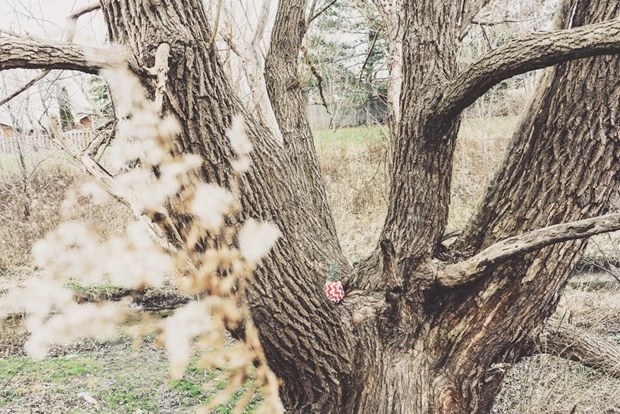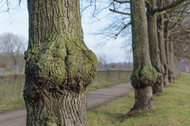Have you ever worked with oak burls? These beautiful cuts of wood are produced from what are known as burls, enlarged masses of cells that often display contorted, interwoven grain patterns and which are exceedingly pleasing to the eye.
Believe it or not, though, oak burls are slow forming and relatively rare as a portion of the total oak harvest, making oak burl veneer a much more sustainable alternative - for the following reasons.
One Burl Can Produce a Great Volume of Burl Veneer Sheets
This is far and away the most important reason that veneer is more sustainable than solid hardwood, and not just burl veneer, but wood veneer in general.
A single log can produce a great volume of veneer sheets and panels, far more than what would be possible to create from it in solid wooden implements and furniture.
As a result, a single log can yield enough veneer (or burl veneer) to complete several projects, stretching the resource so much further.
The same goes for burls, which are generally fairly small to begin with, especially by comparison to a whole oak log (which can be massive). The burl can be sliced into many sheets and panels of veneer, extending its usability.
Oak Burl Veneer Is More Forgiving
Oak wood, even straight grained oak wood, is hard, dense, unforgiving, prone to tear out, and rips as readily as it cuts, making it very difficult to work with both hand and power tools.
In the event you’ve ever worked with solid oak burl, it can be an actual nightmare. Forget hand tools; not only will oak burl quickly dull your saws and chisels, but it can utterly spurn some power tools. That’s how hard and dense it can be.
In a word, it is very unforgiving and can be a challenge even to experienced woodworkers. Not to suggest that oak burl veneer is easy to work with, but it is much easier to work with and less difficult than solid burl.
It is still hard, is tough on tools, will dull them quickly, and can be prone to irregular tearout, but it’s a breeze compared to the solid alternative.
Burls Are Slow-Growing
As if it weren’t bad enough that the use of solid hardwood is not economical in its own right, burls themselves tend to be very slow growing.
Let alone the fact that the oak tree itself could 80 years or more before it reaches a point at which it can be reasonably harvested, the burl could take 30 or 40 years, if not longer, before it is sizable enough to be turned into anything usable.
Remember, by comparison to the trunk of the tree, burls are quite small, even the largest of them. It takes several decades (in most instances) before a burl can be harvested, even if it is to be turned into veneer.
Which, really, compounds with the fact that veneer goes a lot further than solid wood.
Not All Trees Form Burls
Complicating the use of solid burls is that not all trees form burls. That is, any species can form a burl, but the conditions under which they form are inconsistent, making their formation highly irregular.
This has to do with the very nature of what a burl is. It is a mass of wood cells that exhibit highly irregular grain patterns that forms in response to some sort of trauma. It could be an injury to the tree, it could be in response to fungal attack or insect infestation. It could result from other factors as well.
Now, a burl does not always form in response to these factors, which makes harvest complicated. There is no reliable way to force a burl to form on a tree, which means that loggers and harvesters have to basically take what they get.
This alone means that burls are in precious short supply, which explains the high cost of solid burl wood. On top of that, the fact that they grow slowly makes oak burls even more precious.
So again, where you can get it, oak burl veneer just makes the most sense.

Oakwood Veneer’s Plant It Forward Program
Last but not least, oak burl veneer is more sustainable than solid hardwood burls, at least when you buy through Oakwood Veneer, because of our partnership with the National Forest Foundation as a result of our Plant It Forward program.
The high level is this: we’ve committed to planting a tree in the United States for every order placed. Our goal is to do the best by Mother Earth, and to replenish the country’s National Forests one order at a time.
Here’s how it works: you shop; at the end of every month we tally up the orders and donate an equivalency to the National Forest Foundation. Ultimately, every order placed results in one tree planted in one of the National Forests in the United States.
Many of the trees planted are allocated to forests in the West that are at a higher risk of deforestation and wildfire than those elsewhere in the country, so each order is helping to fund replenishment in those at-risk areas.
Just one of the many reasons that buying oak burl veneer is more sustainable than solid burl wood.
Start Your Oak Burl Veneer Project Here
The next time you consider a project using oak burl, consider oak burl veneer as the more sustainable alternative.
On top of the facts mentioned here, it is also the case that burl veneer (as opposed to solid burl wood) is much more economical and affordable, too - so not only will you be following the more sustainable avenue, but you may save in the process.
Oakwood veneer is here to support you with a wide range of burl wood veneers, including oak and many others. Take a look through our collection and if you have any questions before beginning, feel free to get in touch with us at 800-426-6018.


